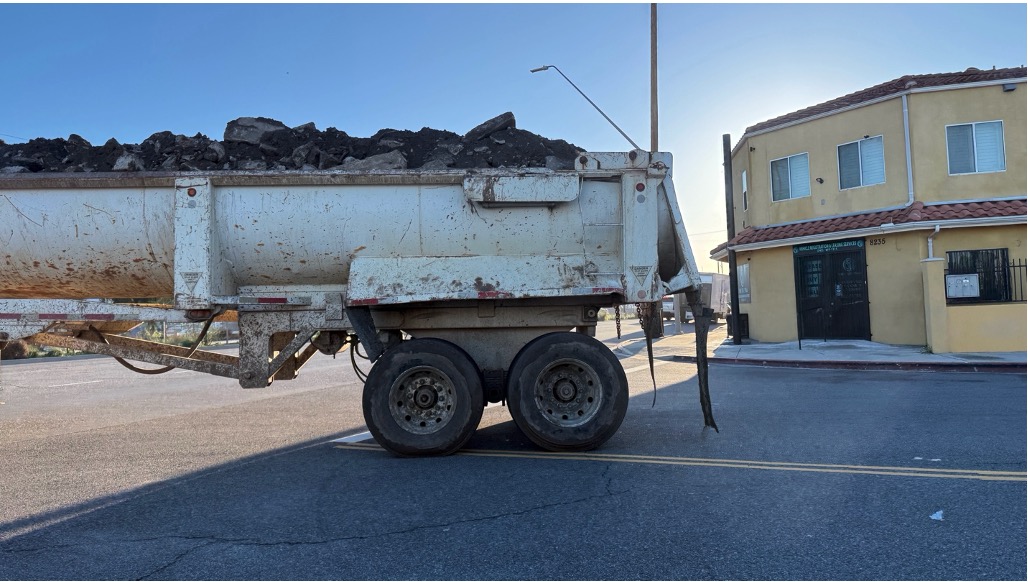Comments
OP-ED - Whiteman Airport, established in 1946 and acquired by Los Angeles County in 1970, stands as a cornerstone of general aviation for the northeastern San Fernando Valley. While some advocacy groups, such as Pacoima Beautiful and their allies, have called for the facility’s closure, it is vital to focus instead on the airport’s far-reaching benefits and enduring role in the community.
The significance of Whiteman Airport extends well beyond private aviation. It serves as a critical hub for flight education and training, aircraft maintenance, news and aerial production, aircraft storage and hangar rentals, compatible non-agricultural uses, emergency operations, supports youth education initiatives, and provides an anchor for numerous community programs within neighborhoods like Pacoima and beyond. These activities and uses demonstrate the airport’s integration into the fabric of local life, offering tangible support for public safety and youth development.
Additionally, ownership of the airport does not belong to any single community or group, nor does it reside with those organizations or individuals strongly opposing its presence, often without fully considering aviation’s complexity or the specifics of airport land use. While expertise in aviation may not be widespread, there is an abundance of historical context, data, and facts affirming the airport’s value. Ultimately, it is essential to base discussions about Whiteman Airport on evidence and clear analysis, rather than on assumptions or narratives that cast it in a negative light. The airport’s record shows a facility deeply connected to and beneficial for the surrounding communities and beyond.
Historically, Whiteman Airport has been a key base for firefighting operations, notably during the January 2025 Hurst Fire, where helicopters used the airport to effectively contain a major wildfire threatening local neighborhoods. This operational capability arguably saved countless homes and lives, highlighting the airport’s critical importance in emergency preparedness and disaster response. Regrettably, despite broad evidence of its value, Whiteman Airport continues to be subjected to unfounded attacks from groups such as Pacoima Beautiful, certain local politicians like Councilwoman Monica Rodriguez, ICONCDC, and other interconnected organizations and individuals who have been swayed by misleading narratives because it benefits them all. The driving force behind the Whiteman Airport closure narrative is not genuine concern for community well-being, but rather the influence of lucrative backroom deals that have shaped this agenda from the beginning. These detractors claim that the airport exists solely to benefit wealthy interests, propagating fears of excessive noise, pollution, and safety concerns. Yet, these allegations do not withstand scrutiny. Whiteman Airport’s safety record actually surpasses that of local roadways and industrial pollution in the area - a fact that rarely enters public discussion.
Moreover, critiques surrounding environmental impact pale in comparison to the realities facing environmental justice areas such as Pacoima and Sun Valley. These neighborhoods confront significant pollution originating from industrial activity, incompatible zoning, and municipal neglect. Streets and sidewalks are often overwhelmed by RVs, trash, and unchecked hazardous operations, while illegal waste disposal and pervasive air pollution from aggregate processors, recycling centers, and landfills remain ongoing issues. Diesel trucks routinely travel with uncovered loads, spreading debris and fugitive dust, while most environmental regulations, such as those enforced by South Coast Air Quality Management District (SCAQMD), California Air Resource Board (CARB), and Los Angeles city authorities, are not adequately upheld. Against this local backdrop, Whiteman Airport emerges as one of the rare enterprises in the region with genuine commitment to environmental responsibility. The evidence points not to an airport that endangers its neighbors, but to one that stands out as an environmentally conscious facility, a reality that deserves recognition, not distortion.

Any given day in Sun Valley
Whiteman’s community value extends far beyond serving the affluent. It is a base for youth aviation programs such as the Civil Air Patrol Squadron 35 (CAP), which provides educational and career opportunities for local youth, offers search and rescue, and volunteer pilot organizations that offer aviation experiences at no cost and whose mission is to serve the communities, save lives, and shape futures. You don’t have to be a pilot or an aviation expert to be part of CAP, you simply need a passion to give. Whiteman also proudly hosts the EAA Chapter 40’s Young Eagles Program, a distinguished initiative since 1992 that has provided over 12,000 youth aged 8 to 17 with their first free airplane ride. This unique program’s sole mission is to inspire and introduce young people to the world of aviation, offering an invaluable opportunity that diverts disadvantaged youth from vulnerable paths such as crime and disengagement born from economic hardship. Operated entirely by dedicated volunteers, not wealthy profiteers, this program equips students with critical skills in teamwork, leadership, aircraft design, large-scale project planning, construction techniques, critical thinking, and mechanical and electrical systems understanding.
It is perplexing that entities like Pacoima Beautiful, led by individuals with political ties such as Veronica Padilla, the founder of Pacoima Beautiful being the sister of Los Angeles City Councilmember Imelda Padilla, along with public figures like Monica Rodriguez, perpetuate a fabricated narrative against this invaluable airport and youth programs. Instead of supporting efforts to recruit more disadvantaged youth, promote awareness, and engage experienced pilots to inspire future generations, these groups actively work to close doors on aviation education, effectively pushing more youth towards dangerous and destructive alternatives. This opposition lacks any rational basis and is driven by profit motives disguised under the guise of “re-envisioning Whiteman Airport.” It is disturbing to learn that Pacoima Beautiful and its coalition partners have actively prevented Whiteman Airport from engaging with local youth through educational outreach in area schools. Despite multiple documented efforts by airport representatives to initiate school-based presentations highlighting aviation careers, educational programs, and one-time introductory flight opportunities, these outreach attempts have failed to receive responses from school officials. Calls went unanswered, and no local schools offered platforms for Whiteman to connect with students or share opportunities available at the airport. As a result, Whiteman Airport has not been afforded the opportunity to present its services or expand educational offerings for youth in the community. This ongoing lack of cooperation has limited student access to information about potential aviation career pathways and related resources. This deliberate obstruction has prevented many young people from learning about possible career paths in aviation that the country so desperately needs, and the benefits the airport could bring to the community.
It is clear that the airport’s opponents typically have undisclosed commercial development interests, advocating for its closure to open the land for questionable projects that no one questions. These proposals prioritize development profits over community well-being and public safety, fomenting uncertainty and fear with partisan misinformation campaigns. Regrettably, the broader city planning context is fraught with challenges, as zoning and land use conflicts persist, particularly in disadvantaged communities of color surrounding Whiteman Airport. Outdated and incompatible industrial zoning leaves residents exposed to environmental pollution and health hazards, yet political and profit interests prevent necessary reforms.
Furthermore, Whiteman Airport plays a crucial role as a reliever airport, significantly reducing congestion at larger commercial airports and enhancing regional air transportation efficiency. It is home to Glendale Community College’s aviation program, which trains the next generation of pilots and aviation professionals that are in such high demand. The potential loss of this program would severely impact the future of the aviation industry. Additionally, several other colleges have expressed strong interest in using Whiteman for their aviation programs, but these plans have been stalled due to baseless allegations aimed at undermining the airport’s reputation and operations. Despite these facts, Pacoima Beautiful and its allies keep pushing narratives asserting the airport serves only wealthy interests, alleging excessive noise, pollution, and safety risks. However, these claims still remain demonstrably misleading, especially when you consider air pollution in the area caused by clustered and unchecked pollutant stationary and mobile sources that do not seem of interest to either Pacoima Beautiful, Monica Rodriguez, or the so-called anti-Whiteman coalition.
Information is power, and it is imperative to shed light on the airport as a hidden gem, offering unparalleled opportunities, a promising future for youth, and cherished memories. Contrary to the narrative concocted by Pacoima Beautiful, the airport’s workforce consists primarily of volunteers, not affluent individuals merely using the airport as a convenience.
In conclusion, Whiteman Airport is a crucial asset serving diverse community needs including emergency operations, youth education, and public safety. The push to close it appears driven by special interests prioritizing commercial development under the guise of environmental and safety concerns, often misrepresenting facts and voluminous data backing the opposite. Protecting Whiteman Airport safeguards a legacy of community service and practical utility for all residents in the San Fernando Valley, not just for a privileged few who put this in motion to benefit selected few. Furthermore, Whiteman Airport must remain dedicated to its designated purpose; it is zoned as an airport, and this designation must never be compromised. If that’s the case, then we should put a motion forward to shut down the Burbank Airport, Van Nuys Airport, and all airports in between, as one way or another, they cause some type of nuisance to the nearby communities the airport land sits on.
Pacoima Beautiful’s campaign to close the airport is a politically motivated move, backed by influential allies and disconnected from genuine community welfare. The stakes are high, and the integrity of Whiteman Airport as a community resource must be fiercely defended. Ironically, if it is determined that airport operations consistently create nuisances impacting surrounding neighborhoods, it may be appropriate for Pacoima Beautiful and its allies to put an action in starting a formal motion recommending the closure of Burbank Airport, Van Nuys Airport, Santa Barbara airport, and any other airports, given their documented contributions to adverse community conditions.
(Mariam Moore is the founder of TCCI, the first environmental non-profit organization dedicated to advocate for environmental justice in disadvantaged communities of color, Sun Valley, in particular.)






